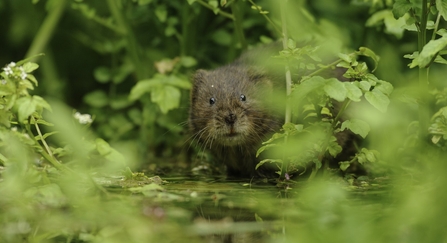Supporting a green recovery for nature
The funding has also allowed WTSWW to assist in improving and strengthening the resilience of Wales’ network of protected land and marine sites, supporting a green recovery for nature and its local communities.
The funding has also allowed WTSWW to assist in improving and strengthening the resilience of Wales’ network of protected land and marine sites, supporting a green recovery for nature and its local communities.
Sentinels of the Sea
WTSWW’s marine monitoring work, gathers important information which is used to support work in Wales’ other protected marine sites. Long-term, uninterrupted datasets help reveal information about population trends, as well as filling knowledge gaps and informing decisions regarding the marine environment. WTSWW’s work is split between Cardigan Bay, and Skomer and Skokholm Marine Conservation Zone.
Project highlights include…
Lisa Morgan, Head of Islands and Marine for WTSWW said, “The continuation of our long-term studies on seabird populations and breeding success requires a huge investment in staff time and training but also in the equipment we need to allow them to do their jobs safely. Money from this grant has paid for everything from boat clothing, VHF radios and lifejackets to a new £6k boat engine for our Skomer team, to a brand new, bespoke ‘Puffin hide’ on Skokholm! Only by knowing how our seabirds are faring each year can we hope to manage our precious island habitats and the wider marine environment for their benefit.”
Skokholm Warden/WTSWW
Connecting the Future
WTSWW’s ‘Connecting the Future’ project has invested in infrastructure which supports nature reserves in south and west Wales so that they can continue to operate as key components in the Welsh nature network.
One of the most exciting projects Nature Networks Fund has enabled WTSWW to deliver has been at Llyn Fach, Rhigos. This SSSI nature reserve consists of Wales most southerly montane lake, cliff, heath and heath restoration on a former conifer plantation. The project has been two-fold:
Paul Thornton, Reserves manager at WTSWW said, “The Nature Networks Fund project has been instrumental in enabling us to deliver conservation and habitat management solutions which had previously been thought impossible to deliver. It has also improved the accessibility and interpretation on our reserves and replaced exhausted tools and equipment enabling sustainable on-going management.”
The project has also developed connectivity to surrounding habitats and other key ‘steppingstone’ sites such as Local Nature Reserves (LNR’s) and sites of importance for nature conservation (SINC’s) and WTSWW’s own, non-designated nature reserves.
The NNF project funding has also enhanced accessibility and interpretation on the Trusts reserves.

Water vole © Terry Whittaker/2020VISION
All of this work, large or small, has contributed to the aims of the UK’s Wildlife Trust’s by helping to protect and restore UK habitats for the benefit of wildlife and future generations.
The Nature Networks Fund is funded by the Welsh Government and administered by The National Lottery Heritage Fund in Wales.